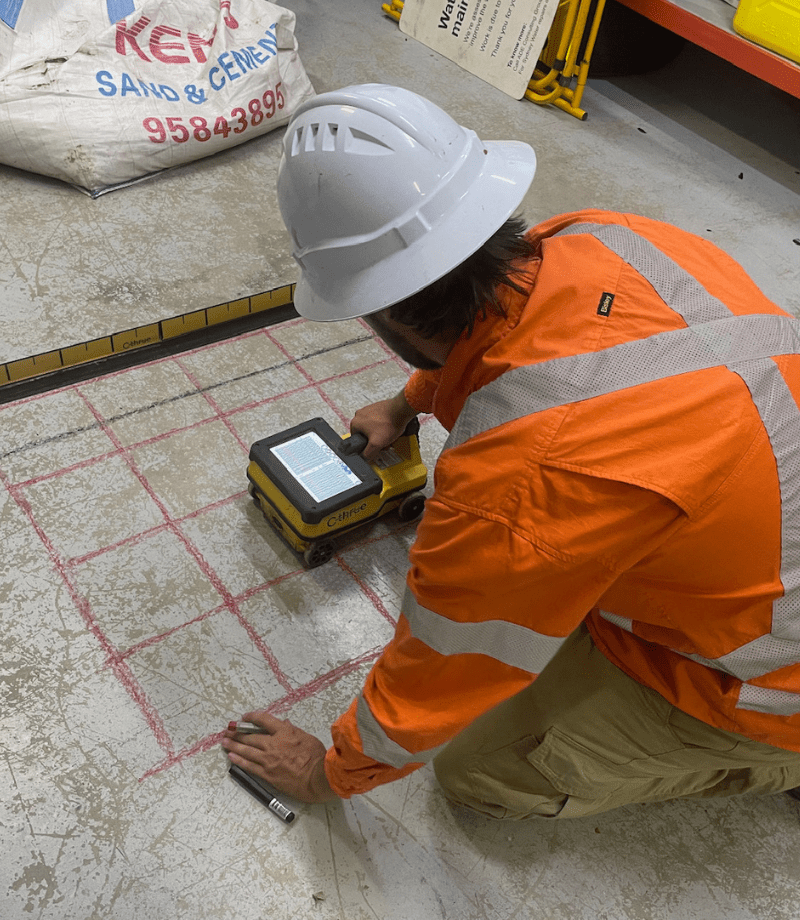Locate RainierGPR Service Areas Near You for Specialist Concrete Scanning
Locate RainierGPR Service Areas Near You for Specialist Concrete Scanning
Blog Article
Concrete Scanning: An Important Step Towards Making Sure Architectural Honesty and Safety And Security
In the world of building and construction and framework maintenance, the significance of concrete scanning can not be overemphasized. This thorough procedure holds the crucial to introducing prospective dangers concealed beneath the surface area of relatively solid structures. By utilizing sophisticated innovation and methods, concrete scanning acts as a crucial tool in making sure that the integrity and safety and security of bridges and buildings are maintained to the greatest criteria. However, past its surface-level implications, the role of concrete scanning extends much deeper than meets the eye.
Value of Concrete Scanning
Concrete scanning plays a vital function in guaranteeing the architectural stability and safety and security of buildings and framework jobs. By utilizing sophisticated technologies such as ground-penetrating radar (GPR) and electromagnetic induction, professionals can non-destructively evaluate concrete frameworks to discover possible flaws, spaces, ingrained objects, and reinforcement format. This process makes it possible for early detection of abnormalities that could endanger the stability of a structure, stopping pricey damages and ensuring the security of passengers.
Prior to drilling, reducing, or coring right into concrete, scanning assists identify the exact places of rebar, post-tension cords, and other embedded elements, minimizing the danger of unexpected hits that could lead to architectural weak points. In addition, concrete scanning help in high quality control by verifying the density of concrete covers and detecting any disparities that might affect the overall sturdiness of the structure.
Innovation for Concrete Evaluation

Benefits of Early Detection
Prompt detection of architectural issues can substantially minimize dangers and make sure the longevity of building tasks. By identifying prospective troubles early on in the building and construction procedure, stakeholders can take proactive measures to attend to problems prior to they escalate into larger and more costly issues. Among the crucial advantages of very early discovery is the avoidance of structural failings, which can posture serious safety and security risks and cause job delays and monetary losses.
Furthermore, early discovery permits for prompt repair services and maintenance, which can assist prolong the life expectancy of the structure. By dealing with issues promptly, building groups can prevent costly repairs or perhaps the demand for premature substitute of structural components. This proactive technique not only saves time and cash however also enhances the total safety and security and resilience of the building and construction task.
Furthermore, very early detection can improve task planning and decision-making by giving stakeholders with beneficial understandings right into the condition of the framework. Armed with this details, task managers can make informed options concerning construction approaches, timelines, and products, bring about a lot more successful and efficient task results.
Ensuring Structural Security
Making certain the structural security of a building task is critical to its safety and longevity. Structural security refers to the capability of a structure or framework to preserve its kind and function under different lots and ecological conditions. To achieve this, thorough evaluation and surveillance of the framework are vital. Concrete scanning plays a vital role in making sure architectural stability by discovering prospective problems such as gaps, delamination, or support corrosion that could jeopardize the integrity of the structure gradually.
By using sophisticated scanning innovations like ground-penetrating radar (GPR) and electro-magnetic induction, building professionals can non-invasively examine concrete structures to identify locations of problem below the surface. This proactive approach enables the very early detection of weaknesses or issues, making it possible for timely repairs or reinforcement to prevent architectural failings.
Routine concrete scanning throughout various building phases and throughout the life cycle of a framework can aid maintain its security, reduce risks, and ensure the safety and security of residents. By prioritizing architectural stability through concrete scanning, building and construction projects can boost their strength and durability, inevitably adding to greater security and explanation longevity.

Avoiding Vital Failures
Implementing regular evaluations, such as concrete scanning, can expose surprise defects like voids, fractures, or deterioration that can jeopardize the honesty of a framework. By utilizing advanced scanning modern technologies like Ground Permeating Radar (GPR) or Concrete X-ray, designers can non-destructively assess the condition of concrete and identify weak points that need support or repair.

Final Thought
Finally, concrete scanning plays a critical role in making sure architectural honesty and safety and security by using innovative modern technology for very early discovery of possible concerns. This proactive technique assists stop critical failures and ensures the stability of frameworks. It is necessary to focus Visit Website on concrete examination as a standard practice to secure the long life and safety and security of structures and facilities.
Concrete scanning plays an important function in ensuring the architectural honesty and security of buildings and infrastructure tasks. Furthermore, concrete scanning aids in quality control by validating the density of concrete covers and finding any type of discrepancies that may influence the overall longevity of the structure. Concrete scanning plays an important function in making certain structural security by spotting potential issues such as voids, delamination, or support corrosion that can jeopardize the stability of the structure over time.

In verdict, concrete scanning plays an essential duty in ensuring structural integrity and security by making use of innovative modern technology for very early discovery of prospective concerns.
Report this page